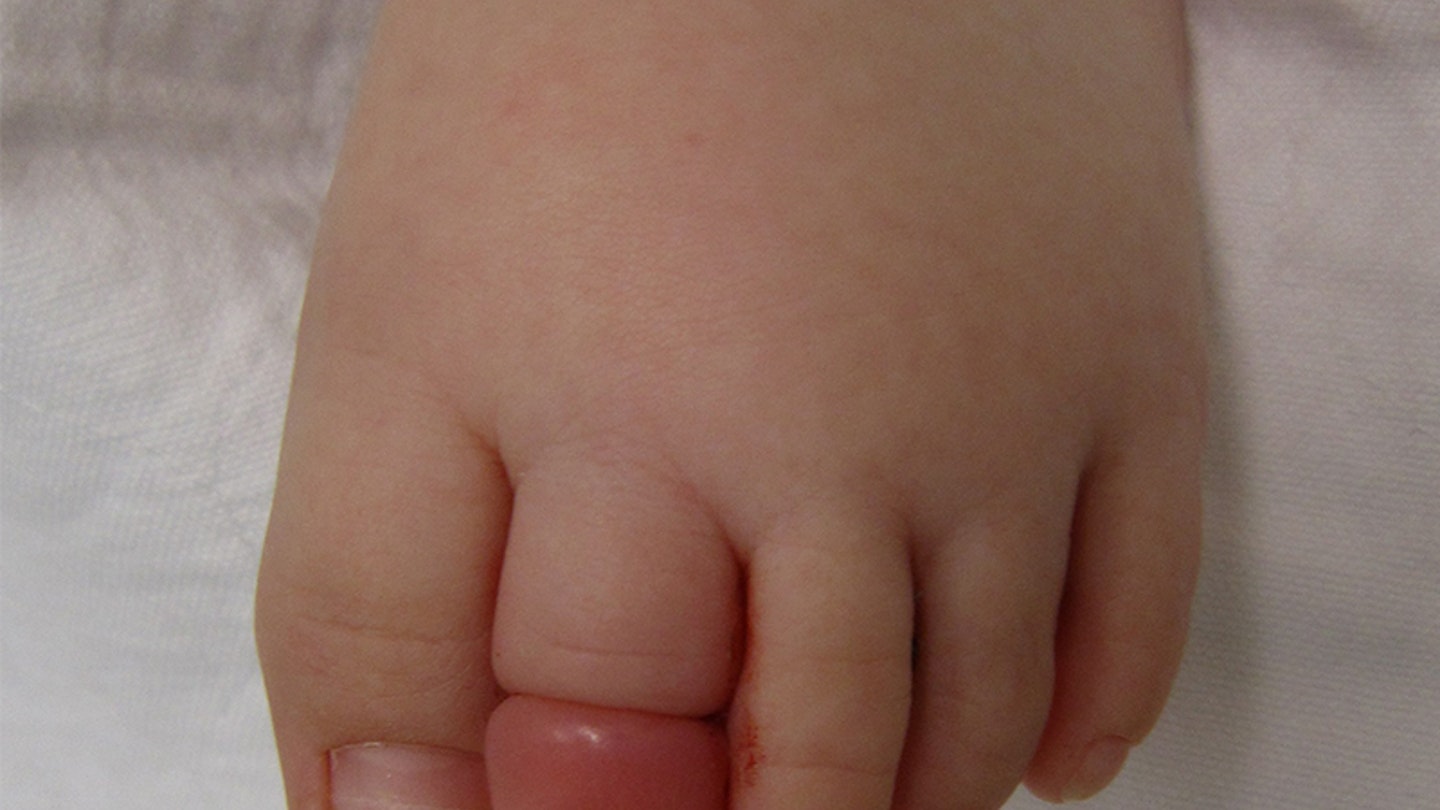As a parent, you are no doubt hyper aware when your baby is in distress and it's good to understand all the reasons this could be, however rare these may be. Which is why it's useful to know about hair tourniquet syndrome.
What is hair tourniquet syndrome?
Also known as toe tourniquet, this condition occurs when a strand of hair or piece of thread becomes tightly wrapped around an infant's finger, toe or genitalia, cutting off circulation. This can cause damage to the nerves, skin tissue and the function of the body part if left too long.
Typically, hair tourniquet occurs in young babies as they are so small that hair is able to wrap around them.
Hair tourniquet symptoms
As this is a painful experience, a baby who is experiencing a hair tourniquet will most likely cry a lot. Once you've checked the usual avenues (feed, change and sleep), look out for the following:
-
Excessive crying
-
Red or discolored body part such as finger, toe etc.
-
Swelling in the appendage
-
An indentation or groove on the appendage, even when no hair is visible
How to remove a hair tourniquet
If the skin around the affected area isn't broken or bleeding, you may be able to try to remove the hair yourself. Be careful not to puncture the skin or wrap the hair even tighter as you do this.
If you cannot remove the hair completely yourself within minutes or you suspect your child has a hair tourniquet, you should take your baby to the hospital straight away.
How to prevent hair tourniquet syndrome
Although hair tourniquets are relatively rare, it's always best to be aware of the syndrome and to take preventive steps.
-
Keep your hair tied up when around your baby.
-
Brush your hair frequently in order to remove loose hair.
-
Check your tot's toes and fingers for signs of hair tourniquet, especially when they are in distress and you are unsure why.
